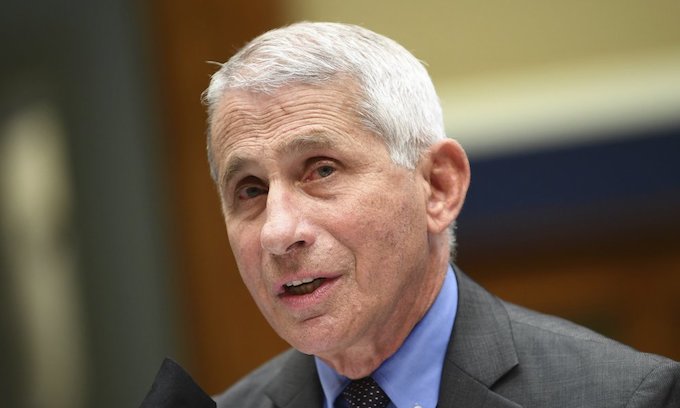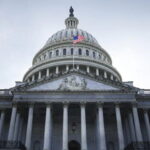A big concern about easing coronavirus restrictions in North Carolina has been the strain that an uptick in positive cases could have on the state’s health care system.
The report issued Tuesday by the state’s Department of Health and Human Services might add to that concern — 915 people currently are in hospitals with COVID-19 related issues, setting another one-day high since the pandemic began in early March.
Also Tuesday, Dr. Anthony Fauci, the leading infectious disease expert on the White House coronavirus task force, told lawmakers that North Carolina risks an “insidious increase in community spread” that will be increasingly difficult to control unless state and local leaders take action to blunt a surge of coronavirus cases there.
Testifying before the House Committee on Energy and Commerce, Fauci was asked by North Carolina Demcratic Rep. G. K. Butterfield to respond to an increase in cases across his state.
Fauci said that the numbers could not be explained simply by an increase in the availability of tests for COVID-19, the disease caused by the novel coronavirus, because “when you get an increase in the percentage of tests that are positive, that’s an indication that you do have additional infections.”
“When you have those kinds of increases, you must implement on the ground as effectively as possible the manpower, the system, the tests to do identification, isolation and contact tracing to try and blunt that surge of cases,” he said.
“Hopefully that will be successful in the blunting of those cases, because if not, then you have the danger of having a gradual, insidious increase in community spread, which will be much more difficult to contain as the community spread amplifies itself.”
As Orange County, CA passes 10,000 coronavirus cases, it slips back toward a Stage 2 limit
Texas reports record of more than 5,400 COVID cases, hospitalizations rise for 12th day
The DHHS report came with Gov. Roy Cooper set to announce this week his decision on whether or not to move to Phase Three — or a modified Phase 2.5 — of the state’s reopening.
“We’re seeing significant spread of COVID-19 across our state,” DHHS secretary Dr. Mandy Cohen said at a Monday news conference. “The percentage of emergency room visits is trending upward for the second week. Our cases continue to climb.
“Our hospitalizations are at some of their highest levels since the start of this pandemic. We still do have capacities in our systems, and we monitor that very, very closely.”
Positive rate of tests is 10%
There were 848 new cases of COVID-19 reported Tuesday by DHHS. The positive rate of tests for the virus was 10%, DHHS reported.
The death total from coronavirus in the state was 1,251, according to DHHS, with 28 new deaths.
Hospitalizations is one of the key metrics being used by Cooper and health officials in judging whether to further loosen restrictions to help the state’s economy.
On May 23, there were 589 people in the state’s hospitals with the coronavirus. The state topped 800 hospitalizations for the first time on June 11 — there were 812 reported that day — and the total has dipped below 800 just three times since that report.
According to the DHHS data Tuesday, 24% of inpatient hospital beds and 23% of ICU beds were available, with 91% of the state’s hospitals reporting.
A question about the percentage of available hospital beds arose during a court proceeding last week over the restraining order against Ace Speedway in Alamance County. DHHS attorney Andrew Kasper told Superior Court Judge Tom Lambeth that he had been told the number of open beds — in the 80 percentile — was “not materially higher” than prior to the pandemic.
Kasper said the level of availability was a product of hospitals taking measures to control hospitalizations for non-COVID-19 related health issues. Kasper noted that during coronavirus outbreaks in Italy and Spain “capacity can be overwhelmed very quickly” and that availability must must be maintained to counter a potential surge in cases.
Total number of cases fluctuates
In the past few weeks, the total number of new cases per day has bounced up and down like a heart monitor reading.
On June 12, for example, there were 1,768 new cases reported. There were 1,427 the next day but 751 cases on June 16.
Then, an increase. On June 19, there were 1,652 cases reported and that then tailed off to 804 on Monday but was at 848 on Tuesday.
The numbers, as expected, were based on varying amounts of tests completed — 21,822 on June 12 and 12,942 tests on June 16.
The one constant has been the percentage of people testing positive: roughly 9% or 10% according to DHHS figures.
The DHHS said an estimated 51.1% of adults in the state are at higher risk from COVID-19 based on being age 65 or older, having an underlying health condition, or both.
The DHHS also reported that an estimated 42% of the state’s population has at least one of the underlying health conditions in the CDC list of those considered at higher risk — those suffering from such conditions as chronic lung disease, cardiovascular disease, diabetes, smoking and kidney disease.
The case numbers vary greatly by county. Wake County, for example, has had 36 COVID-19 cases per 10,000 residents compared to 120 cases per 10,000 residents in Chatham County and 101 cases per 10,000 in Durham County.
Phase Three could begin as early as Friday afternoon, if Cooper gives the go-ahead order. Phase Two of the reopening, which began May 22, allowed restaurants, barbershops and salons and other personal care businesses to open with limited capacity.
___
(c)2020 The News & Observer (Raleigh, N.C.)
Visit The News & Observer (Raleigh, N.C.) at www.newsobserver.com
Distributed by Tribune Content Agency, LLC.
—-
This content is published through a licensing agreement with Acquire Media using its NewsEdge technology.



















Recent Comments